Preliminary note: For Gmail readers, this essay might be clipped due to size limitations. To read the entire essay simply click on “View entire message” at the bottom of the email, thanks.
As of Tuesday, 8 March 2022, it has been 12 days since Russia began its invasion of Ukraine. After a yearlong period of building up its forces along Ukraine’s borders, Russia has commenced on a full scale invasion of Ukraine. Within the first 12 days of the war Russian forces have advanced rapidly, but neither military nor political victory is within sight. The war has followed a largely predictable course with few major surprises, yet nevertheless the Russian war effort is unusual for a number of reasons. I would like give a recap of the war thus far with analysis, and offer predictions of how the war will play out going forward.
Background to the Conflict
This war is the culmination of nearly a decade of Russian-Ukrainian tensions that began following the 2014 Maidan Revolution. The revolution brought to power a pro-Western, anti-Russian government in Kiev. The revolution caused grave fears in Russia that Ukraine would join NATO, and become a base for American military forces and their activities aimed against Russia. Russia’s immediate response was to seize the Crimean Peninsula and sponsor a war in the Donbass region between the Ukrainian government and Russian separatists. The 2015 Minsk II Agreement attempted to end the conflict with reforms to the Ukrainian constitution, but these reforms did not materialize. Ukraine continued and deepened its security relationship with the United States and NATO, while Russia became increasingly impatient and fearful of American influence over its neighbor. The Kremlin eventually ran out of patience it seems. Believing a diplomatic solution to be less and less likely, it began a massing of military forces along the Ukrainian border in the spring of 2021. In the winter of 2021 saw a further massing of forces near Ukraine, along with Russia issuing an ultimatum to NATO. Many of the demands were non-starters, for example, Russia demanded NATO to withdrawal its forces back to where they were stationed in 1997.
January and February 2022 saw a continuing buildup of forces, including Russian military deployments to Belarus, to the north of Ukraine. By the middle of February, up to 200,000 Russian soldiers were assembled across the Ukrainian border. Following a weekend of a marked increase in fighting between Ukrainian and separatist forces in the Donbass, Russia announced the recognition of the Donetsk and Lugansk People’s Republics on February 21st. Finally, in the early hours of the morning of February 24th Ukrainian border posts came under attack, followed by Russian missile strikes across Ukraine. Shortly afterwards Russian forces poured forth into Ukraine.
The Russians are invading Ukraine on four main axes of advance. In the north from Belarus, Russian forces are advancing south along both side of the Dnieper River to Kiev. To the east, from the Oblasts of Bryansk and Kursk, Russian forces have advanced westwards in the direction of Kiev and the Ukrainian border city of Sumy. Further south, from Belgorod, Russian forces have advanced on Kharkov, the second largest city in Ukraine. Armed forces of the Lugansk and Donetsk People’s Republics have advanced north and west, respectively. In the south, Russian forces have advanced northwards out of Crimea, splitting into two groups going northwest and northeast. Contrary to what some have been saying, Russian armed forces have been very successful thus far, for the most part. The greatest successes have been realized in southern Ukraine by the Russian forces advancing north out of Crimea. The advance south from Belarus against Kiev has been mostly successful. The Russians seem to have run into substantial problems only in the offensive on the Belgorod - Kharkov axis, but this is likely something they predicted could occur.
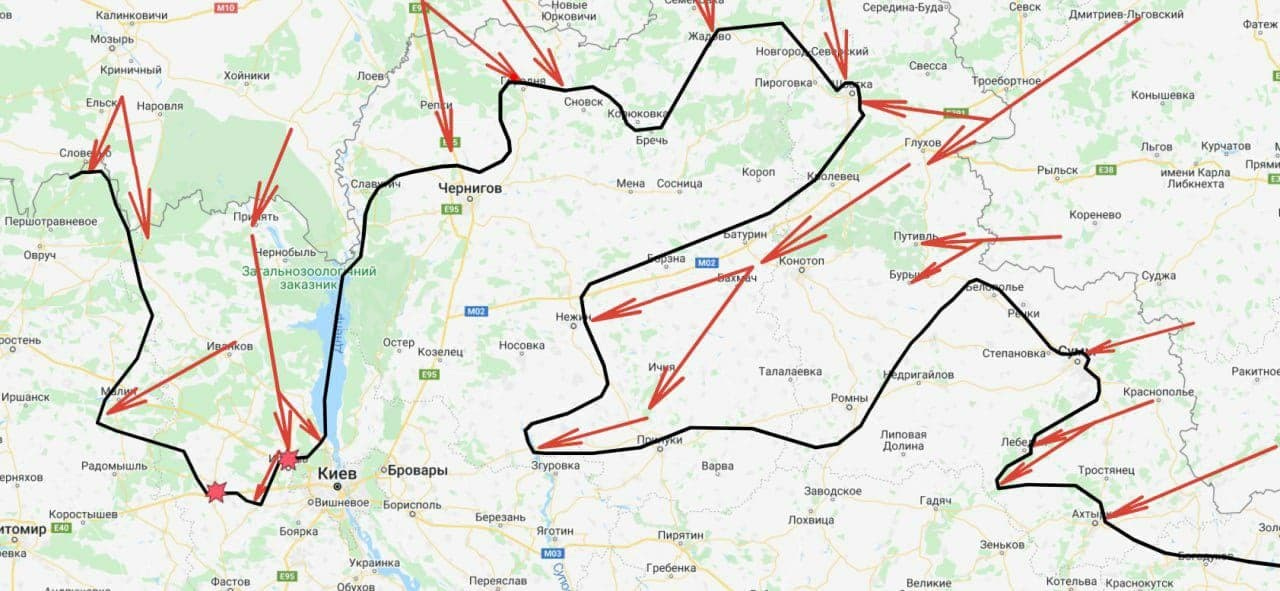
Belarus – Kiev Axis
The Kiev offensive has been the most dramatic Russian advance thus far, and might prove to be the most decisive offensive of the war. The main Russian thrust in this offensive has been on the right bank of the Dneiper River towards Kiev’s northwestern side. In a series of daring air assaults on Ukrainian airports just outside of Kiev, in conjunction with a mechanized column which moved south through the Pripyat marshes, Russia successful established a forward position about 30 kilometers from the center of Kiev. This was all accomplished in just over 24 hours after the invasion began. Such an advanced forward provides Russia with a strong position from where it can press further against Kiev, and all before the Ukrainians could have mounted a proper defense in the Pripyat marshes.
The main VDV (Russian airborne forces) assault was a helicopter based landing on the Antonov Airport at the town of Gostomel, located only 35 kilometers northwest from the center of Kiev. This landing came under a heavy Ukrainian counterattack, and initially there were reports the Russian force was wiped out. It is still unclear what exactly happened, but it seems some of the Russian VDV survived the Ukrainian counter attack, suffered very heavy casualties but were not entirely eliminated. They instead retreated from the airport to nearby woods and villages. After holding out for over 24 hours, the VDV at Gostomel were eventually met by the Russian forces that had advanced south through Chernobyl and the Pripyat marshes. Once linked up, Russian forces secured the area around the three villages Gostomel, Vorzel and Bucha, and then began to push on Irpin towards Kiev.
On day 3 of the war (February 27th), in the early morning, the Russian VDV attempted another ambitious air assault, this time against the Vasilykiv Airbase located southwest of Kiev. Unlike the operation as Gostomel, this air assault failed with the VDV likely being wiped out.
What was the purpose of these highly ambitious air assaults is unclear and debatable. Some think Russia was attempted to seize key airports near Kiev that would create an air bridge. With an air bridge established, Russia could rapidly deploy forces from Belarus to the outskirts of Kiev. From there, the Russians could have moved rapidly against Kiev, capturing the city and the Ukrainian government, delivering a decapitation strike against Ukraine. This explanation is fully possible, and I will discuss Russia’s war plans in greater detail ahead. What is also possible is that these airborne operations were meant primarily to facilitate the rapid advance of Russian forces driving south from Belarus up to the outskirts of Kiev.
Between the Belarusian border to Kiev is some of the most difficult terrain for military forces to maneuver through in all of Ukraine. The primary obstacle is the Pripyat marshes, large wetlands regions with dense forests and several rivers. Additionally, this is where the Chernobyl nuclear facility is located. If Ukrainian forces had been able to mount a success defense in the Pripyat marshes, the Russian advance on Kiev almost certainly would have become bogged down and stuck. The purpose of the VDV assault on Gostomel was likely meant to disrupt Ukrainians deep in the rear, making it difficult for them to hold off the Russian column advancing through Pripyat. If the Ukrainian forces instead focused on halting the Russian column and did not move against the VDV at Gostomel, there was a serious risk the Russians could have created an air bridge. If the VDV were allowed to hold Gostomel, Russian forces could have established a significant presence close to Kiev and deep behind Ukrainian frontlines. It was an imperative for Ukrainian forces to prevent this from happening. Forces that could have otherwise been used to halt the Russian column were instead sent against the VDV at Gostomel, making it easier for the Russian column to press through the Pripyat marshes. It appears the Russian column only met noteworthy Ukrainian resistance the on the second day of the war at Ivankiv, located 60 kilometers north from Gostomel. By this point the column had already passed through the most difficult terrain.

If VDV operations around Kiev were meant to facilitate the advance of Russian forces towards Kiev, the objective behind failed assault on the Vasilykiv airbase becomes understandable. Located 35 kilometers southwest from central Kiev, if this VDV operation had been successful it is very likely that Kiev would have been encircled from the west and southwest by now. Assuming VDV landings deep in Ukrainian territory were meant to disrupt Ukrainian defenses and allow Russian forces to advance more swiftly, by seizing the Vasilykiv airbase the VDV would have aided the main Russian force in cutting the E40 and M05 highways which connect Kiev to Zhitomir in the west and to Odessa in the southwest respectively.
Vasilykiv is located on the M05, thus a successful seizure of the airbase would have immediately cut off Kiev from the southwest, and the advancing Russian forces would have cut the E40. With the E40 and M05 highways cut, Russian forces would only need to drive east and cut the last remaining Dniprovske and Stolychne highways to entirely encircle Kiev on the right bank of the Dnieper, entirely isolating Kiev from western Ukraine. Increasingly is appears Russia plans to put Kiev under a long siege instead of outright storming the city. Thus sealing Kiev off from the rest of Ukraine and preventing any supplies from reaching the city is an imperative. The failure at the Vasilykiv airbase likely set Russia back considerably in terms of its timetable for accomplishing operational tasks.
I believe Russia plans to besiege Kiev instead of storming it, because of how Ukrainian authorities are conducting the defense of the city. In response to the very quick arrival of Russian forces to the gates of Kiev, local authorities began the mass distribution of small arms and began forming territorial militias to defend the city. Last I read, 25,000 rifles and 10 million rounds of ammunition, along with grenades and anti-tank weapons have been distributed to civilians in Kiev. These territorial militias are not well trained or well-armed, yet they will make any Russian assault on Kiev incredibly difficult. They simply need to hide in buildings and shoot at Russian soldiers as they come into the city. Due to their large numbers, they will make storming Kiev a nightmare for the Russians. Kiev is a large city of around 2-3 million people, with many high-rise apartment building spread throughout. Every single building can be turned into a fortress by the Ukrainian army or by territorial forces. The Russians are facing the prospect of urban warfare in Kiev comparable to what happened in Grozny during the Chechen Wars. For both military and political reasons this is a very bad scenario for the Russians, and are likely hoping to avoid it at all costs.
During the first few nights of the war there was intense gunfire throughout Kiev, many videos were posting online of ongoing gunfights which gave many the false impression that the Russian army was already storming the city. In reality these gunfights were likely the result of criminals and gangs who had received weapons under the auspicious of urban defense, but instead were going to town on each other in gang warfare. This indicates that not only will Russia encounter intense urban warfare if its forces attempt to enter Kiev, but Russian occupation will be met with mass lawlessness and general chaos thanks to now heavily armed civilian population. For reasons I will explain further ahead, I believe Russia will avoid entering Kiev for the time being. Instead they will encircle the city, placing it under siege.
In the more immediate future, Russian forces will instead consolidated their position in the northwest of Kiev and begin moving to secure other neighboring suburban areas. It appears after the initial successes in the first 72 hours of the war, the Russian offensive towards Kiev has slowed down. This is partially due to logistical reasons, but also due to strong Ukrainian resistance, who have successfully counterattacked in some areas. Nevertheless, in the past few days Russian forces have crossed the E40 south at the village of Berezivka, and have pushed farther south still. Russian forces are making steady, but slow progress, as the urban development of Kiev will inevitably make any forward movement difficult.
The Russian advance on the left bank of the Dnieper has been less dramatic. Russian forces ran into significant resistance at the Ukrainian border city of Chernigov, and similar to Kiev, have been slowing maneuvering around the city hoping to encircle it. Some Russian forces have bypassed the city altogether, likely with the objective to encircle Kiev from the left back of the Dnieper.
Despite the failure at Vasilykiv airbase, the Kiev offensive has thus far been very successful. To advance 300 kilometers through very difficult terrain up the enemy’s capital within the first day of the war is a great success. That being said, the Russians face two challenges in this offensive. First, in terms of how the people of Kiev could have respond to the Russian invasion, their mass mobilization into territorial defense militias is likely the worst possible scenario from the Russian standpoint. For reasons already stated this will make capturing Kiev very difficult. The other problem is logistical. Currently Russia controls none of the rail lines that run from Belarus into Ukraine towards Kiev, and as a result their entire supply line is based on trucks. Transporting goods by rail is much quicker and efficient than by trucks on a road. Until Russia can secure control over the rail lines running from Belarus to Kiev these logistical difficulties will control. The well reported 40 mile long convoy of vehicles stretching from the Belarusian border down to Kiev is indicative of Russia’s logistical problems in this offensive. This supply column has been used as proof of Russia’s inferior logistical capabilities, but this is frankly an unfair assessment. Russia is attempting to supplying a major offensive operation that is over 300 kilometers away from its supply depots, without using railways and instead using truck transports on a few narrow roads. Under such conditions, logistical bottlenecks are inevitable. Looking forward, I strongly believe Russia will seek to capture the railways, while simultaneously moving to encircle Kiev.
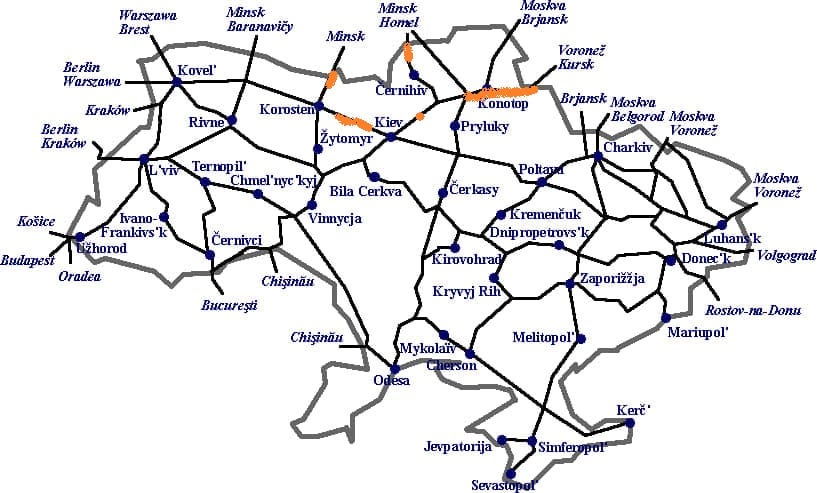
It is also worth pointing out, this entire offensive against Kiev would have been impossible had not been for Belarus’s increasingly subordinate relationship to Moscow. This is of tremendous irony, and surprisingly I have not seen anyone else point this yet. For some years now Russia has been trying to assert control over Belarus, while its president, Alexander Lukashenko, has been quite successful in maintaining Belarusian independence. He accomplished this by playing the EU and Russia off of each other, until events in 2020 derailed this strategy. What happened was a Western sponsored colour revolution broke out which threatened Lukashenko’s hold on power. Seeing a hostile West, Lukashenko naturally turned entirely to Russia. The colour revolution ultimately achieved nothing but to irrevocably push Lukashenko into Moscow’s sphere. What makes this all so incredibly ironic is that, if it had not been for this attempted colour revolution, it is very possible Belarus would have stayed largely neutral and would not be serving as a base of operations for Russia. Without Belarus, Russia’s offensive on Kiev would be impossible. Ultimately, the West’s hostile actions against Lukashenko made this offensive on Kiev possible.
Eastern Front: Eastern Kiev Axis and the Belgorod-Kharkov-Dnepropetrovsk Axis
The eastern front has seen the slowest Russian advance. It is spilt between two main axes of advance, a northern one against Kiev and southern one against Kharkov. The northern axis has been mostly successful, encountering manageable resistance at several small cities such as Konotop and Ichnya. Like elsewhere, Russian forces have surrounded these cities or in the process of surrounding them, and then bypassing them. The axis against Kiev drives further westwards, and while reports change frequently, it seems Russian forces are somewhere between 25-50 kilometers east of Kiev. Further south, the border city of Sumy has proved more problematic. Reportedly on first day of the war Russian forces entered, only to encounter Ukrainian army units who pushed them back out. Sumy is now partially encircled.
Further south at Kharkov, the Russians have encountered very stiff resistance and appear to be bogged down. It was well known before the war began, this was the most fortified and heavily defended sector of Ukraine’s border with Russia. It is likely not surprising to the Russian leadership their armed forced encountered problems here. Additionally the region is relatively hilly and forested by the standards of Ukraine which further impedes Russia’s advance.
On day 3 of the invasion (February 27th), Russian reconnaissance and motorized infantry forces attempted to enter Kharkov. Reportedly some units penetrated as deep as the city’s center, but they came under intense fire, and reportedly at least one Russian spetznaz unit was wiped out. The Russians were pushed out of the city, and the following day Russian forces instead advanced on Kharkov’s eastern flank. Russian forces have advanced as far as the village of Balakliya, putting a lot space between their advance and the Ukrainian artillery located inside of Kharkov.
I suspect the Russian leadership is dissatisfied with the slow advance on this axis, and strongly desires Kharkov to be least encircled as soon as possible. The reason I believe this, is because advancing past Kharkov is crucial to encircling the large Ukrainian forces located in the Donbass region. I strongly believe the next objective of Russian forces advancing past Kharkov is the city of Dnepropetrovsk on the Dnieper River. In conjunction with Russian forces advancing northeastwards from Crimea towards Zaporozhe located just south of Dnepropetrovsk on the Dnieper River, these two groups of Russian forces will achieve the encirclement the aforementioned Ukrainian army units near Donbass. With the forces of Lugansk and Donetsk pushing westward, the Ukrainian army near Donbass will be easily liquidated.
The Russian leadership’s loss of patience with the slow advance on the Kharkov-Dnepropetrovsk axis is evident in the change of the rules of engagement on Day 6 of the war (March 2nd). The Russians have been extremely hesitant to use their heavy firepower on Ukrainian forces in urban centers, hoping to avoid civilian casualties, as well as economic and infrastructural damage. On day 6 of the war this changed and Russia began employing its heavy firepower against Kharkov on an increasingly indiscriminate basis. As the battle is prolonged, I expect to see Russian firepower used more and more on the city.
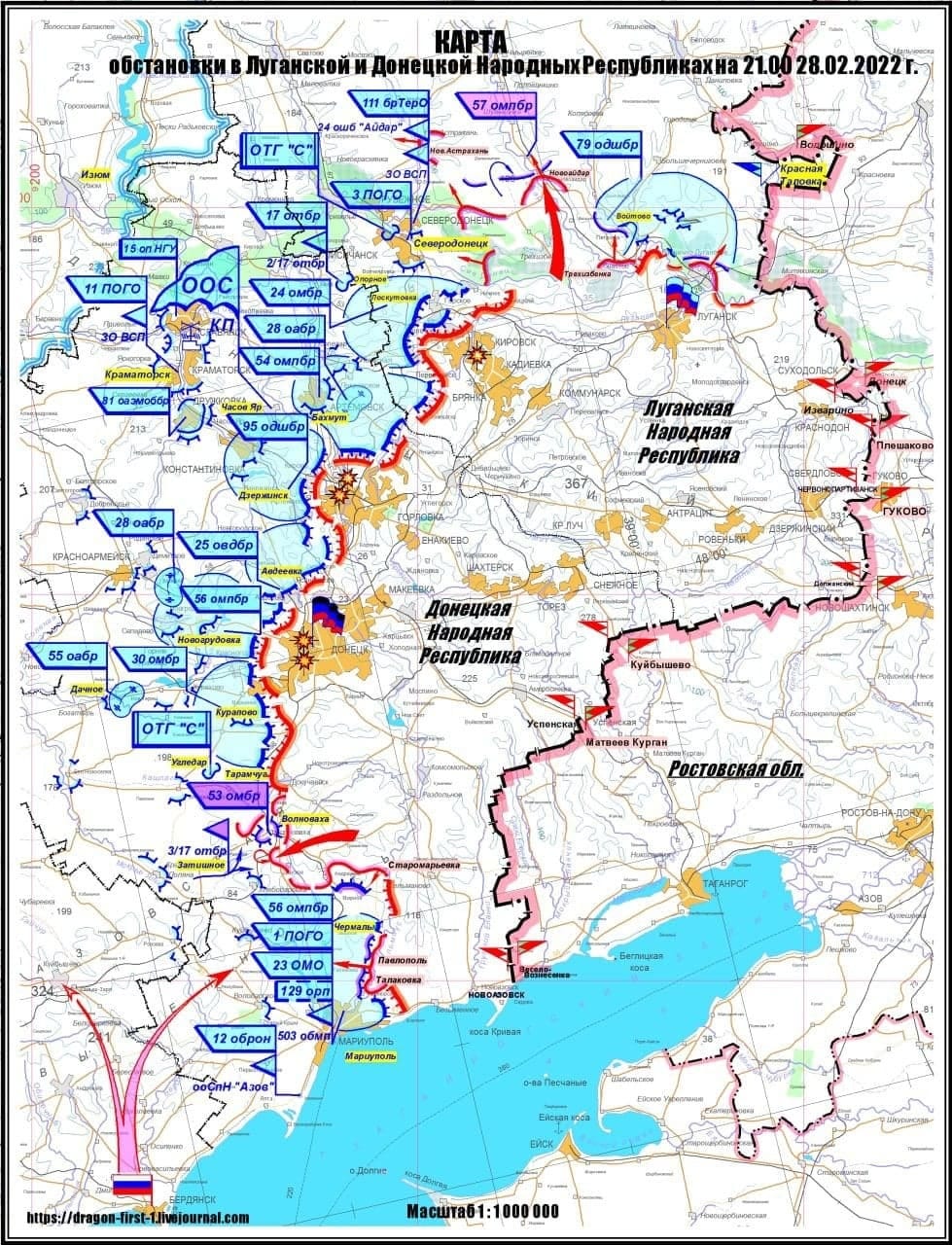
Donbass Front
Armed forces of the Donetsk and Lugansk People’s Republics, assisted by forces of the main Russian army, have realized limited, yet important gains. The Ukrainian forces facing the separatist Donbass republics are the most entrenched and dug in all of the Ukrainian forces. The Donbass war which broke out in 2014 never ended, and instead saw 8 years of low intensity fighting. The Ukrainian forces likely have multiple layers of defenses and breaking through has been a predictably slow affair for the armed forces of Donetsk and Lugansk.
Lugansk forces in the north have advanced towards Severodonetsk, and are likely seeking to link up the Russian forces advancing on Izyum from Belgorod. There is also a Russian force advancing from Rostov Oblast towards Starobisk. In the south the Donetsk forces have advanced along the coast of the Sea of Azov up to Mariupol. In conjunction with Russian forces advancing from northeast Crimea, they have successfully encircled Mariupol placing it under siege. Additionally, Donetsk forces have advanced westward, to the north of Mariupol. They have seized the village Volnovakha, which both cuts Mariupol off from the rest of Ukraine and also establishes a land connection from the Russian mainland to Crimea.
Crimean Front
Crimea is similar to Belarus in providing Russia with an additional compass direction to invade Ukraine from. The Crimean Peninsula has enormous geopolitical importance in that gives Russia naval and air dominance over the Black Sea and the southern Ukraine. Russia has seen the greatest successes with forces operating out of Crimea, in terms of accomplishing tasks according to their operational schedule. The Russian forces operating in southern Ukraine are taking advantage of the wide open steppe terrain, and utilizing fast motorized infantry supported by helicopters. In a nice case of history repeating itself, the Russian offensive here is quite similar to the Crimean Khanate, who in the 17th - 18th century dominated the Pontic Steppes from Crimea.
The break out from Crimea was supported by amphibious landings. Quickly after entering Ukraine, Russian forces split into two groups moving on different operational axes. One group has advanced northeast and thus far reached: Vasylivka, Orikhiv, Polohy, and Mariupol. I believe the primary objectives of Russian forces here are Mariupol, which is now under siege, and Zaporozhe. Mariupol is being held by a Ukrainian militia force called the Azov Battalion. Often described as a neo-Nazi group, they are at the very least ideological fanatics. Reportedly they are preventing civilians from leaving Mariupol, and will likely fight to the death. Due to the uncompromising nature of their opponents, Russian forces will likely be forced to level much of the city in order to secure it.
The other group coming out from Crimea went northwest. Within 24 hours of the war beginning, Russian forces had reached the Dnieper River and secured the strategically vital Antonovsky Bridge over the Dnieper at Kherson. After crossing over the Dnieper, Russian forces surround Kherson and captured it on day 7 (March 3rd). The Russians have bypassed Mykolaiv, and reached the town of Voznesensk which has an important bridge that Russia will need if it chooses to advance on Odessa. The immediate strategic objective of this offensive over the Dnieper into left bank Ukraine is ambiguous. There are several possibilities. Either they plan to go northeast to Zaporozhe and Dnepropetrovsk, helping to encircle those cities from the left bank, or go north to Kiev, or southwest to Odessa. Likely all three are intended, the question is only in what order.
I might be completely wrong with this assessment, but I do not think the immediate objective here is Odessa. First, capturing Odessa has little immediate strategic value. The city is blockaded by the Russian Black Sea fleet and is located in a relatively isolated corner of southwestern Ukraine. Second, an operation to capture the city would be fairly difficult. Advancing overland would involve crossing several rivers whose bridges could be destroyed to slow Russia’s advance. Additionally, the supply line from Kherson to Odessa would be 200 kilometers long and exposed to Ukrainian attack from the north. Amphibious and airborne landings are difficult too. Ukrainian forces at Odessa have had over a week to prepare defenses. Much of the coastline is made up of cliffs making any amphibious landing only feasible at a handful of nearby beaches. There are videos of some of these beaches being mined, in additional to other defenses being prepared. An airborne landing would be difficult, as Ukrainian anti-air defenses are still functional and American airborne early warning intelligence is being reported to the Ukrainians. I believe instead Russia will keep the prospect of an advance on Odessa possible in order to keep Ukrainian forces tied down in the city. During the early days of the war there were repeated rumors of Russian air and amphibious assaults on Odessa, and on day 8 (March 4th) the Black Sea fleet made a very public appearance near Odessa. I suspect all of this is simply Russian strategic deception meant to keep Ukrainian forces near Odessa and not sent to Kiev or elsewhere.
Instead I think Russian forces in left bank Ukraine will advance north towards Kryvyi Rih, an important mining town, as well as a key logistical node in southern central Ukraine. If Russian forces can reach Kryvyi Rih, they will effectively cut Zaporozhe, Dnepropetrovsk and much of eastern Ukraine off from western Ukraine. The importance of this is that it would prevent Western supplied weapons from reaching the Ukrainian forces in the east. It appears Western supplied arms, ATGM and MANPADS in particular, are inflicting significant losses on Russian forces and are slowing their advance. If Russian forces can successfully push northwards from Kherson and Mykolaiv, they can effectively encircle and isolate eastern Ukraine from the west. Without further Western arms the Ukrainian fighting ability will severely worsen, making their defeat come sooner and with less cost to Russia.
What were Russia’s War Plans?
Many have speculated that Russia had initially hoped to avoid a major war, and instead sought a quick decapitation strike against Kiev that would cause the Ukrainian military and government to collapse. While only a speculation, it is fully possibly. The airborne assaults against the Gostomel and Vasilykiv airfields reminded me very much of Operation Storm-333 in 1979, where Soviet Special Forces decapitated the Afghan government as a part of their full invasion of the country. Yet, contrary to what some are saying, the failure of this decapitation strike, if that was even the plan, does not mean Russia has lost or is losing the war. If a decapitation strike was the plan, it was simply plan A. It is undoubtedly clear that Russia also fully prepared itself for a long, grueling war against determined Ukrainian resistance. If the theoretical decapitation strike was plan A, what we are currently seeing being executing by Russian forces is their plan B.
I have absolutely certainty that Russia had contingency plans in place for a scenario where their invasion was met by strong Ukrainian resistance. My certainty is simply based on the size of the force that was assembled on Ukraine’s borders prior to war. It is estimated nearly 200,000 soldiers were assembled around Ukraine, estimated to constitute about 70% of the offensive power of the Russian Armed Forces. If Russia was only planning for a decapitation strike then there would be no reason to assemble all of these troops.
There is other evidence that is used to argue that Russia only planned for a decapitation strike and not a full scale invasion war. Many theorize that the first wave of Russian troops to enter Ukraine were second rate, with lower morale and worse equipment than other units. There is a simple explanation for this based on my plan A and B hypothesis. The Russian forces in the first wave were expected to achieve one of two things. Either accept the surrender of Ukrainian forces and occupy territory unopposed, or if meeting Ukrainian resistance they would serve to probe Ukrainian forces to see where their weak and strong points are. The Russian leadership was likely uncertain of what kind of resistance to expect before invading. Either the Ukrainian army as whole would stand and fight or disintegrate upon first contact, or would mixture of both, where some units resist and others disintegrate. If Russian leadership was uncertain which elements of the Ukrainian army and state would resist or disintegrate it would also explain the limited air and missile attacks during the early days of the war. If the Ukrainian forces at Kharkov were to surrender 48 hours into the war, then annihilating the city’s civilian infrastructure prior would not be useful at all.
It is well known governments plan for several different contingencies, as it is best to be prepared for whatever might happen. For example, the United States made plans for the invasion of Canada in the Second World War. Contingency planning is standard procedure for militaries, governments, corporations and many other organizations. The Russian leadership likely has numerous plans for every possible contingency scenario. What exactly were the war plans of the Russian leadership is a question that will only be answered years from now, but I find the narrative that Russia was unprepared for strong Ukrainian resistance to be completely unconvincing. Many who seem to think this fail to understand the importance Ukraine has to Russia. For reasons of security, economy and history/identity, Russia is willing to pay an extremely high price to see their aims towards Ukraine realized. I am absolutely certain the Russian leadership considered the possibly of a long, grueling war, yet decided it was worth it even then. Simply, from the Russian standpoint the Ukrainian question is a matter of life or death for them as country.
Regardless of Russia’s war plans, their political objective almost certainly remained the same, and this will be discussed further below.
Is Russia Losing?
Another common narrative which quickly sprung up is that Russia is either losing the war, or at the very least severely under performing in its military operations. By looking at the map and seeing the full extent of Russian gains in the south and north, this is clearly not true. This is especially true in the north at Kiev, where in just over 24 hours the Russians had established a forward position in Kiev’s suburbs. Normally, if the enemy reaches the gates of your capital city within just over 24 hours, the war is as good as lost.
Nevertheless, it is fully understandable why this line of thinking has emerged. Looking at the Russian military as a whole, it has far more firepower than the Ukrainians, especially so in aviation and standoff missiles. Considering how overwhelming Russian firepower potentially is, it is curious they have not advanced further than they have, especially so on the Kharkov axis. This is because Russia has not been using all the firepower it has available, such as rocket artillery and fixed wing aircraft. Since the war began, Russia has been essentially fighting with one arm tied behind its back. There are several reasons why this is.
First, why is Russia limiting its use of fixed wing aircraft? This is because America is providing radar and signals intelligence to Ukraine, and combined with Ukraine’s extensive air defense network, it is simply too dangerous for Russia to fully employ its air force. Normally, Russia would be able to detect Ukrainian radar stations and target those radars with anti-radiation missiles. With the radars neutralized, the Ukrainian anti-air system would be effectively blind. The Russian air force could then establish air superiority and fully employ their ground-attack aircraft. After years of what was essentially live-fire practice in Syria, the Russian air force is very capable in assisting ground operations and would have a decisive effect against Ukrainian forces. Yet, this has not happened, the Ukrainians are not even turning on their radars. Instead American and NATO airborne early warning planes are flying near enough to the Ukrainian border in Polish and Romanian airspace where they can detect any activity by the Russian air force. They then feed this intelligence to the Ukrainians. There is a BBC news report video of this on YouTube if anyone would to see it, the plane itself is quite interesting link:
Thanks to the radar intelligence from America and NATO, the Ukrainians have been successfully keeping Russian planes out of the sky. This is potentially very dangerous of course, as the Russians are faced with a dilemma. They either have to accept this situation where their air force is grounded or they will take action against these early warning planes, which risks escalating the current war into full Russia-NATO collision. Reportedly the Ukrainians are even using American intelligence to deliver highly accurate artillery fire against Russian forces. It is without a doubt, both the intelligence and weapon systems that NATO is providing to Ukraine are seriously annoying the Russian leadership. If Russia’s war effort becomes bogged down, if progress is too slow or if Russian forces are suffer greater than acceptable losses, I am confident Russia will try to do something to force NATO to end these activities.
The Russian advance has also been slowed down due to strong Ukrainian resistance in cities. As mentioned prior, cities are natural defensive sites. The Russians have a very simple solution to this problem, they flatten the city to the ground with aerial bombing and artillery. Thus far the Russians have not employed these methods, and what artillery and bombing of urban centers that has occurred, it is very limited and constrained by Russian standards. This is because the war is being fought with an eye towards long term political objective above other more immediate military concerns. Russia’s ultimate objective in this war is not only the political subordination of Ukraine to Russia, but as Putin himself said, the reunification of Russian and Ukrainian peoples. Leveling cities, destroying people’s homes, and killing hundreds of thousands of civilians would almost certainly create a lot of bad blood between the Ukrainians and their new overlords. Even if only eastern Ukraine is annexed or turned into a puppet state by Russia, this is a large geographical area and a large number of people. In order to make the absorption of Ukraine into the Russian sphere as smooth as possible, and not like swallowing a porcupine, it is best not to antagonize the local population.
Additionally, any civilian infrastructure that is damaged or destroyed during the course of military operations will have to be repaired once the war is over. As Russia will incorporate much of Ukraine into its sphere, it will be Russia that ultimately pays for rebuilding Ukraine. Russia is not a rich country, it struggles to sufficiently maintain its own infrastructure, and thus it has real incentive to avoid indiscriminate bombing.
Without the full employment of airpower and artillery against fortified urban areas Russia is advancing through Ukraine at a relatively slower pace than what could otherwise be achieved. Many people simply have the wrong impression of the true reality of the situation, and in fact this misunderstanding is potentially very dangerous. While I doubt the Baltic countries, Finland, Poland, and others underestimate Russia, nevertheless such mistakes are possible. For example, the Germany high command concluded the Red Army was a non-serious fighting force after their poor performance against Finland in the Winter War. In the end, the Germans paid dearly for their mistaken analysis.
Current Ukrainian and Russian Strategies
It is impossible for Ukrainian forces to fight Russian forces in open, conventional battles. While Ukrainian forces could win some engagements, ultimately Russia’s superiority in numbers and firepower will overwhelm the Ukrainians sooner rather than later. Instead, Ukraine is turning their cities into defensive strongpoints. The Ukrainians are also in the process of the mass mobilization of their civilian population. I have read estimates that Ukrainian territorial defense militias could reach 500,000 people by the end of month. Considering Ukraine’s military position, this is a totally viable defensive strategy, and likely the best available to them. The intent should be to make the prospect of forcefully entering Ukrainian cities so costly to the Russians that they chose to negotiate, with an agreement favorable to the Ukrainians. This does not appear to be what Ukraine is planning to do. Instead, they appear to using methods comparable to the late-Second World War German Volksturm and what Hamas does in Palestinian territories. I understand this sounds pejorative, but this is not what I am implying. I am simply not aware of other historical or contemporary comparisons to make to what Ukraine is doing.
In my analysis, the Ukrainians are mass mobilizing their civilian population to use them as human shields, and then parade their bodies on Western media. These forces will be poorly armed and trained, and have little military usefulness. They will make it more costly for Russian forces to enter Ukrainian cities, but as I mentioned previously, the Russian solution to this problem is the simply level the city. In the end, all of these armed civilians will die, their cities destroyed, with nothing gained. I believe this is in fact the goal of the Ukrainian leadership, who are being cheered on towards this end either consciously or not by Americans and other Westerners. I think Ukrainian leadership is hoping for Russia to flattened cities and inflict mass deaths among the civilian population for PR purposes. With their mass mobilization of urban populations, the Ukrainian leadership is putting the Russian forces in a similar position that Hamas puts Israel’s IDF in. What Hamas does, is hide their forces in dense urban centers from where they stage attacks on Israel. The Israelis are faced with a dilemma, either they tolerate Hamas’s attacks, or they shoot back which will inevitably inflict civilian casualties. The Palestinians in turn show dead civilians and destroyed building on Western news media with the intention of ruining Israel’s international reputation. Both Hamas and Ukraine are using their civilians as human shields. Civilians throwing Molotov cocktails at Russian tanks will achieve nothing, other than getting themselves killed. This should be obvious. As America is weaponizing its “cancel culture” for foreign policy objectives, Russia will be endless maligned in Western media if the Ukrainian strategy succeeds. Personally I find it quite sick that Westerners are cheering the Ukrainians on with this strategy. What they are doing, whether consciously or not, is to sacrifice endless Ukrainian lives all for a narrative to be built of Ukrainian martyrdom. Of course, none of these Westerner cheering on Ukrainian civilians to die needlessly will go to Ukraine and fight themselves. Instead they are content to fight Russia to the last Ukrainian.
This strategy will potentially succeed because Westerners are extremely emotional people by and large. From an early age, we are trained to view the world through a hyper-moralized lens. As adults, things that are distant or personally unimportant become the subject of enormous moral significance. Sometimes these things are real, while other times they are entirely fake. For example, the British population was emotionally manipulated into joining the First World War thanks to fake information about German atrocities, the infamous “rape of Belgium”. In the social media age this highly emotional characteristic is intensified, manipulated and exploited. It is very common to encounter people who have strong opinions about topics they know little about. Instead their strong opinions are almost entirely based on the moral sentiments that have received from others, either personal contacts or through the media. Westerners are effectively religious fanatics without any fixed religion per say, and instead their moralism is directed towards whatever is trending in the news or whatever is relevant to them for professional or political purposes. Even at the academic level, often analysis of contemporary political and international events is nothing more than moral platitudes with supporting facts.
If my theory here is accurate, the Ukrainian leadership and its Westerner supporters, whether consciously or not, are attempting to luring the Russians into a PR trap of turning Kiev into Aleppo. Reportedly in Mariupol, civilians have not been allowed to leave the city despite humanitarian corridors for evacuations being agreed upon by Ukraine and Russia. Yet, it seems the Russians are attempting to avoid this outcome. Instead of forcefully entering cities, they encircle them and attempted to negotiate a surrender with the municipal authorities. Whether Russia can avoid flattening entire cities going forward is still an open question. I suspect at least a few minor and medium sized cities, like Mariupol, will be totally destroyed before this war is over. For Kiev though, I believe the Russians will attempted to besiege and starve city into submission. Flattening Mariupol would be one thing, but to do this to Kiev would be a horrible outcome for the Russians and their post-war objectives.
What is next for the Russian-Ukraine War?
In recent days Russia has appeared to have entered an operational pause. Russia will consolidate its conquests thus far, and allow supply lines to reach its forward units. Negotiations with Ukraine have resulted in a temporary ceasefire that allows for civilian evacuations of warzones. Without a doubt Russia is using these ceasefires to prepare for future offensive actions. Expect large scale Russian offensive actions to commence again very soon.
Because of Ukraine’s mass mobilization of its civilian population, Russia almost certainly requires more men for its war effort. The 200,000 troops assembled prior the war’s beginning are likely not enough to: seal off all heavily defended cities, keep order in occupied territory and continue offensive operations. In the days and weeks to come, I believe Russia will commence on a partial mass mobilization of its own. Reservists, conscripts, and additional Rosgvardiya forces will be deployed into Ukraine for low risk and relatively easy tasks of blockading cities and maintaining order. Due to the nature of Ukrainian defensive strategy and Russia’s hesitancy to inflict excessive civilian casualties, the war will likely last for some time longer. In my opinion, the war will end at the earliest in 4 weeks’ time, with the war’s total length being 6 weeks. Nevertheless it could go much longer. Clearing each city of Ukrainian forces will be a slow, methodical process. The battle for Kiev will be especially challenging as the city is offering total resistance to Russian forces. Likewise, as rail lines and roads run through cities, Russian logistics will be severely hampered until it can successful capture the besieged cities in their rear.
Kiev ultimately will be starved into submission I believe. Storming the city will simply be too difficult for Russian forces. The other alternative being to turn Kiev into Grozny is political undesirably. Reportedly, by day 7(March 3rd), Kiev was already running out of food and gas. Of course, military forces will be feed before civilians, but nevertheless this indicates Kiev is already facing serious supply shortages. In the coming days and weeks Russia will complete the encirclement of Kiev, sealing the city off from the rest of the country and further supplies. Maybe in a month or two months’ time, Kiev’s defenders will be so hungry they will be begging Russian forces to feed them, and whoever does attempt to resist will be so weakened from hunger they will be easily defeated.
Western support for Ukraine will become a major issue if Russian forces become slowed down or begin to suffer unacceptable loses. Russia will attempt to end Western arms supplies to Ukraine in two different ways. First, they will try to seal off Ukraine from the West. As mentioned previously, I believe Russia forces in southern Ukraine will advance northwards on both banks of the Dnieper River, and if successful they will isolate the Ukrainian forces current fighting from any further Western supplies. We could also see an entirely new front opened in western Ukraine, where Russian and Belarusian force advance south from Brest towards Lviv in an attempt to seal the Polish-Ukrainian border.
Russia’s second operation is to escalate the conflict in an attempt to force Western countries to withdrawal their support for Ukraine. This escalation will come in different forms, including shutting off gas and oil deliveries to Europe, cyber-attacks, and nuclear threats. The last is most critical. It is poorly understood in the West just how important Ukraine is Russia. The Russians view both Ukraine and this war as a matter of life and death for their country, and they will escalate to the conflict to a nuclear level if they feel compelled to. On the weekend before the war began, Russia staged tests of its strategic missile forces and in the first week of the war, they put their nuclear forces on an alerted posture.
This brings us to the issue of a Western imposed no-fly zone over Ukraine. This proposal is simply insane, and anyone that advocates for it is either a naïve idiot or an irresponsible lunatic. To impose a no-fly zone over Ukraine would require American or NATO air forces to attack Russian air forces. This would without a doubt escalate into a broader Russia-NATO war, and very possibly a nuclear exchange. These people, whether knowing or not, are effectively advocating for nuclear war Russia in order to defend Ukraine.
What is Ukraine’s future after the war?
What exactly Russia plans to do with Ukraine politically is unclear. I suspect Ukraine will be carved up into two general spheres, a Russian oriented east and a political neutral/Polished influenced west. Eastern territories will be eventually annexed to Russia, such the Donbass, southern Ukraine up to Odessa and Transnistria, and possibly eastern Ukraine including Kiev. I suspect Kiev will remain under martial law for some time, with curfews and city checkpoints. The proliferation of small arms will make the city very difficult to pacify long after it has been captured. Ultimately I think Kiev will be annexed to Russia, due to its logistical importance within Ukraine and its historic significance to Russia. Russian Ukraine will likely have territorial borders that look something like the historic Zaporozhian Cossack Host or the Hetmanate.
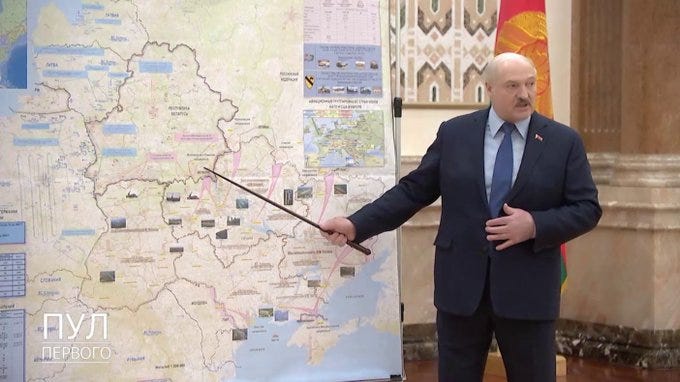
The future of the Lugansk and Donetsk People’s Republics will be quite interesting. I think they will be annexed to Russia soon after the war, and will likely have a similar relationship to Moscow as Chechnya does. Due to 8 years of continuous warfare these republics are extremely militarized, with a male population that is highly attuned to warfare. I think these republics will enjoy a partially autonomous status within the Russian Federation, and their role will be to provide military forces in Russia’s future wars. This is very similar to Chechnya, who is highly autonomous and essentially provides Moscow with military levies whenever called upon. The relationship between Chechnya and Moscow is basically a feudal one, and if the Donbass republics follow a similar course it would be tremendously interesting. This would be the return of pre-modern forms imperial state building. Even more important within the context of Russia, this could be the return of the Cossack hosts, which were a series of autonomous settlements in imperial frontier regions made up of incredibly martial people who could defend the empire’s borders.
Historically western Ukraine spent very little time under Russian rule and culturally is more similar to Poland than to Russia. Russian Ukraine will extend west at the very furtherest to a north-south line of Zhitimor-Vinnytsia. Any long term Russian presence west of this line will be far too provocative to Poland and NATO, and likewise going so far west would be an overextension of Russian forces. Populations in western Ukraine will be vastly more hostile to Russian rule than people in the east, and if Russia attempted to rule these people it would be like swallowing a porcupine.
I believe the fate of western Ukraine is to become a neutral, demilitarized rump state, eventually coming under strong Polish influence. Under Polish influence, rump-Ukraine will become a base for guerilla activities against Russian Ukraine. Polish-armed partisans will cross into Russian Ukraine, launching attacks, and in return Russia will use its special forces, air forces, and missiles to attack these partisans in their home-bases. It will be similar to how the Mujahedeen and Taliban used Pakistan was a base for attacks in Afghanistan during Soviet and American occupations. The guerilla war will be kept alive thanks to covert support from anti-Russian eastern European states, especially Poland. This rump state will not join NATO, simply because the ongoing guerrilla war will force NATO to make a security commitment it does not want to make. This will be long, low intensity conflict and will make rump western Ukraine a horrible place to live for the next decade. For completely understandable reasons Poland will never change its anti-Russian stance, and will supply arms to Ukrainians partisans, potentially forever. Western rump-Ukraine will likely be depopulated as civilians migrate to more peaceful regions in the European Union or to Russia and Russian Ukraine.
In the Ukrainian lands that come under Russian control, I expect there to be a thorough campaign of de-Ukrainization. The specific goal of this is to change the population’s identity from being “Ukrainian” to being “Russian”. Over time Russian state symbols will replace Ukrainian ones and the Ukrainian language will be phased out in favor of the Russian language. Eastern Ukraine has always very Russian, their inclusion to Ukraine is largely a Soviet construct. Here, Russificantion and de-Ukrainianization will be easy to achieve I think, with minimal popular resistance. I also anticipate, a terrorist attack by Ukrainian nationalists will be used by Russian authorities to crackdown of the lingering Ukrainian identity. Likely some aspects of Ukrainian identity will be declared as extremist and outright banned. This sounds very authoritarian, even totalitarian, but frankly this is not radically different than how Confederate symbols are treated in the United States. Moreover, under the Soviet Union national identity was made and remade by state authorities, and what Moscow likely intends to do is neither new nor different from the historic experiences of the people in question. Again, territories of Ukraine that will come under Russian control have historically been Russian, and they will be relatively easy to incorporate into the Russian sphere. It will not be as difficult a process as some people think. What constitutes the modern Ukrainian identity is largely based in the west of the country, and Moscow is likely not going to attempt to dominate these regions in any significant way.
Historically, “Ukraine”, or the territory that encompasses modern Ukraine, has rarely ever been independent. For much of the past 400 years and more, it was spilt between Russia in the east and Poland in the west. What we call Ukraine today has been a highly contested zone of imperial expansion between Russians and Soviets in the east, and Poles and Germans in the west. Historically the Slavic populations would side with one power against the other, and rarely were they independent. Ukraine’s past will be its future in this regard.
Sanctions
The sanctions currently being imposed on Russia are totally meaningless. First, they do little to target the key Russian industries and exports to European markets, while Russian-American trade negligible. The sanctions that were imposed after the 2014 Crimean annexation did nothing, except help stimulate domestic Russia production. Following 2014, Russia becomes the 3rd largest grain producer and the world’s largest exporter of wheat. Russia has been preparing for this eventuality since 2014; it has alternatives to SWIFT and will increase economic cooperation with Asian and other non-Western countries. To understand how impotent sanctions are in terms of forcing a state to change its behavior or in helping to effect regime change, think of Iran. For more than 40 years now Iran has been under intense sanctions and made into an international pariah, yet shows no signs of imminent collapse. In fact, despite the sanctions Iran is a moderately successful country by all standards. Russia has a larger population, more food and natural resources, and better technology than Iran. If sanctions could not break Iran they will have even less impact on Russia.
Many European countries only imposed sanctions on Russia due to American pressure. As America increasingly retreats from the continent and shifts its attention to the Asia-Pacific region, these European countries will seek to reconcile themselves with Russia. Moreover, as the American-Chinese geopolitical competition intensifies, American will have no choice but to attempt to split Russia from China. America will offer to ease sanctions in order to achieve this.
Cancel Culture as Foreign Policy
The most noteworthy Western response to the war has been to “cancel” Russia. Reportedly in the Czech Republic Russian university students have been expelled, a Russian orchestra conductor was forced to either denounce Putin or be fired (he was fired), a university in Italy suspended literature courses on Dostoevsky, and several Russian restaurants have been vandalized and attacked in Europe and America. This behavior is akin to the Red Guards during Chinese Cultural Revolution. All of this will have an entirely predictable effect. It gives the average Russian the impression that the West really is anti-Russian, not only against Putin and government, but against Russian culture and the Russian people as a whole. And frankly they would be correct to think this. Others before me have pointed this out, that Slavs in general and Russians in particular are the only people you are allowed to be racist against in the modern West. What will naturally occur is a greater sense of “asabiyyah” among Russian people, while pro-Western elements will be increasingly marginalized. The “cancelling” of Russia is not only idiotic, but it will have entirely counterproductive results.
Several America media companies have chosen to leave the Russian market like Disney, Facebook, McDonalds and others. This only makes America’s ideological subversion of Russian society more difficult to achieve. American media has been the main vector of American influence dating back to the Cold War. It is really quite odd they are doing this to themselves. What they are doing is a favor to the Russian state and society. Frankly, Russian society will be healthier with their absence. In short, the West has effectively torpedoed all of its “soft power” in Russia in a fit of apoplectic hysteria.
European Geopolitics
This war will have the ironic effect of causing America to further withdrawal from Europe. As Russia appears increasingly assertive and willing to use military force, America will reduce its commitments to Europe and further encourage European states to become responsible for their own security. This is for two reasons primarily. First, in America, there is no appetite domestically for war against Russia. After the failed wars in the Middle East and the increasing political divisions internally, no one wants conflict with Russia. The Republican Party is increasingly becoming “isolationist”, a pejorative way to say it but nevertheless useful. The Democratic Party is ironically now the more hawkish of the two parties. Yet, with its anti-war tradition it is doubtful it can successfully champion a forward policy in Europe. Also it should be noted, the Democratic Party’s hostility to Russia is primarily based around the alleged Russian interference in the 2016 election. Their hostility is based on domestic political issues and not ones directly pertaining to Ukraine or Europe. Second, America’s main focus will increasingly be in the Asia-Pacific region, with its growing strategic competition with China. Any entanglements with Russia are ultimately a distraction from this end. The repeated and clearly stated pronouncements by Biden, Blinken and others, that America will not directly intervene in Ukraine is a clear indication of what direction American policy is going in regards to Russia and European security.
This war seems to have already reawakened Germany from its slumber, with the German Chancellor announcing plans to significantly strengthen the German armed forces. This is a great development. For the sake of Europe, Germany must become a normal, confident country again. It is not merely a matter European security. Germany’s humbled station for nearly 80 years now has had a deleterious effect on European civilization as a whole. The First Word War is well understood now to have not been Germany’s sole responsibility, but instead a failing of all the Great Powers equally. As for the Second World War, a tragic and unfortunately 12 year period of a country’s history should not hang over its head forever. Germany is simply too central and important to Europe’s history and cultural heritage. Germany returning to history is absolutely necessary for the future vitality of European civilization.
Final Thoughts
In regards to of the so called “liberal international order”, Putin and Russia have truly crossed the Rubicon with this war. Russia has set itself on a course, on no uncertain terms, to overthrow the existing international order. The moment Russian forces crossed the Ukrainian frontiers there was no turning back. What Russia has done is unlike its other past incidents in Georgia and Ukraine. In the 2008 War against Georgia or the intervention in the Donbass, Russian military operations had sufficient casus belli as defensive actions meant to protect Russian allies. This war is truly different as it a war of aggression and conquest against an American ally. Russian victory in this war will torpedo the “liberal world order” and notions of American hegemony.
Yet this is not a bad thing, in fact I think this a great thing and anyone who looked upon the prospect of the “End of History” with dismay should rejoice. I cannot imagine a world more boring, more meaningless than one at the end of history. There would be nothing worse than to live in boring times, fated to be the “last men” that Nietzsche wrote of, concerned with merely safety and comfort, and not with anything truly great. It is only in interesting times full of challenges and danger that true greatness can emerge in people. It is unimaginable that our current age could produce men like Xenophon and Alexander, or the likes of Nikolai Przhevalsky and Ernst Junger. Even if such people exist today with such potential, the current state of affairs makes the realization their greatness near impossible. What has existed in the West since at least the mid-20th century is a world without heroes and without heroism. Instead the most base human instincts are increasingly held up and celebrated as the ideal. Fortunately this period is coming to an end. What Russia has done is to help birth a new world historical epoch. And thanks to the sheer audacity of the Russian leadership the so called “end of history” will come to be regarded as nothing but a bad joke.




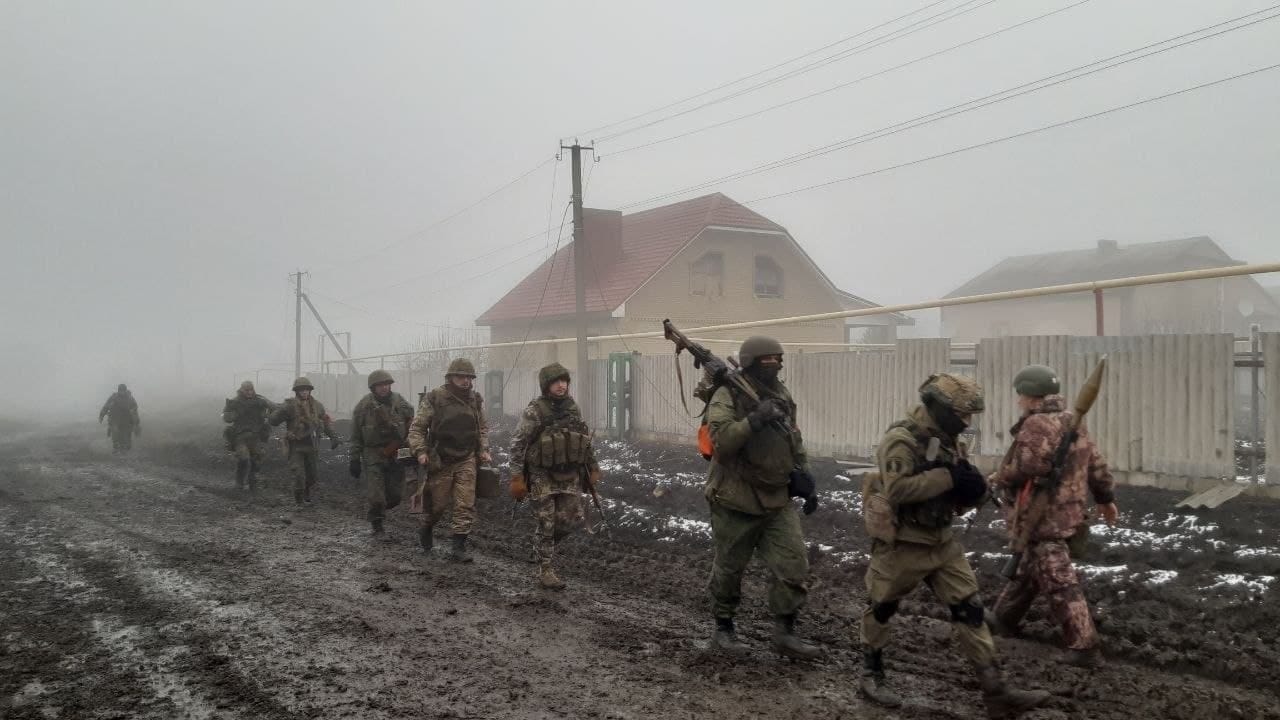

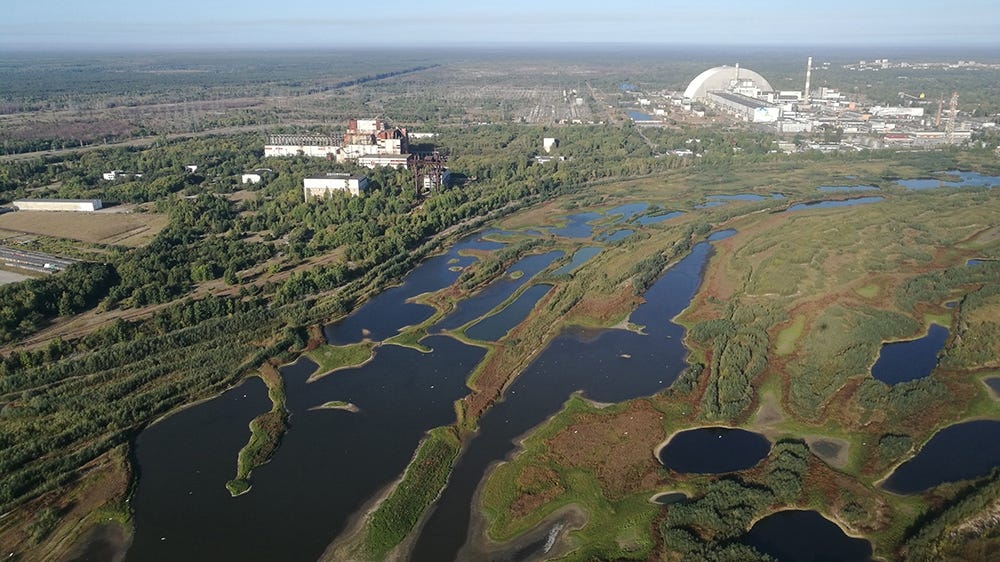
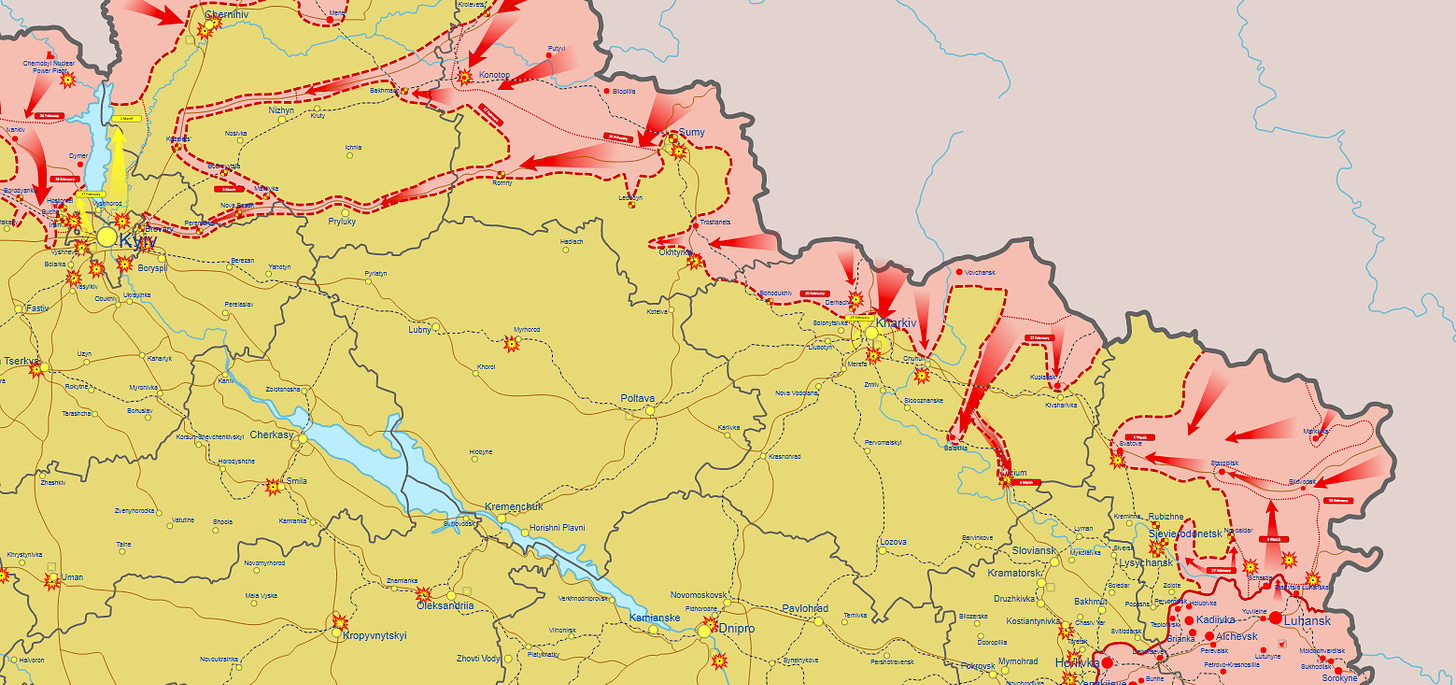
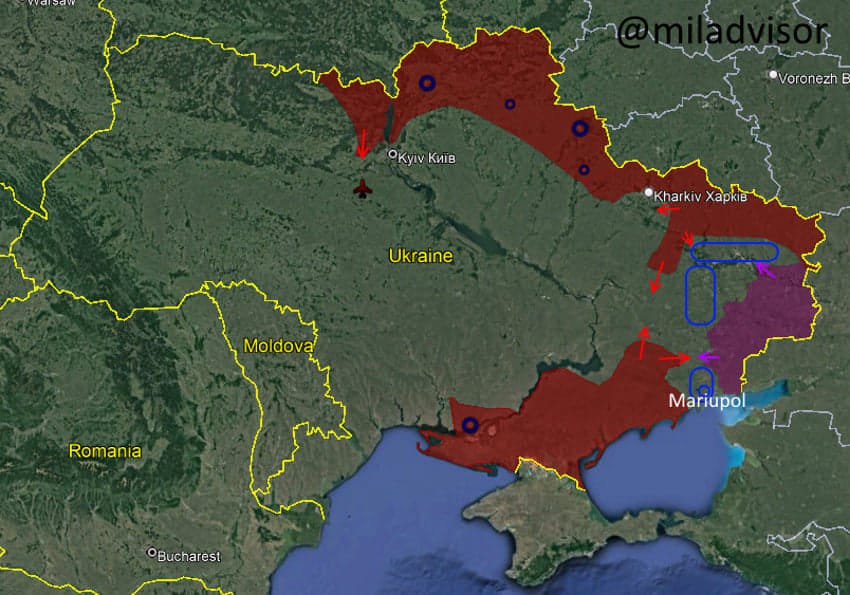
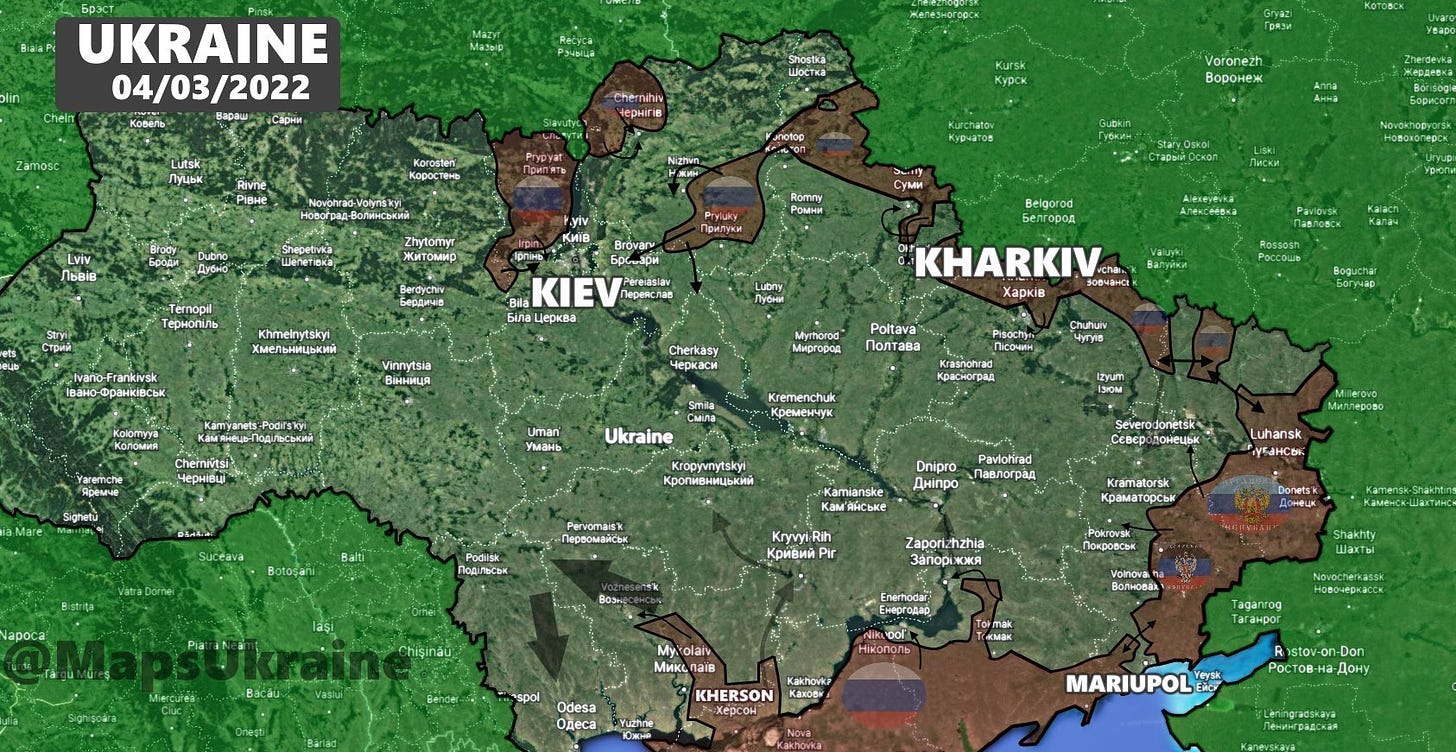
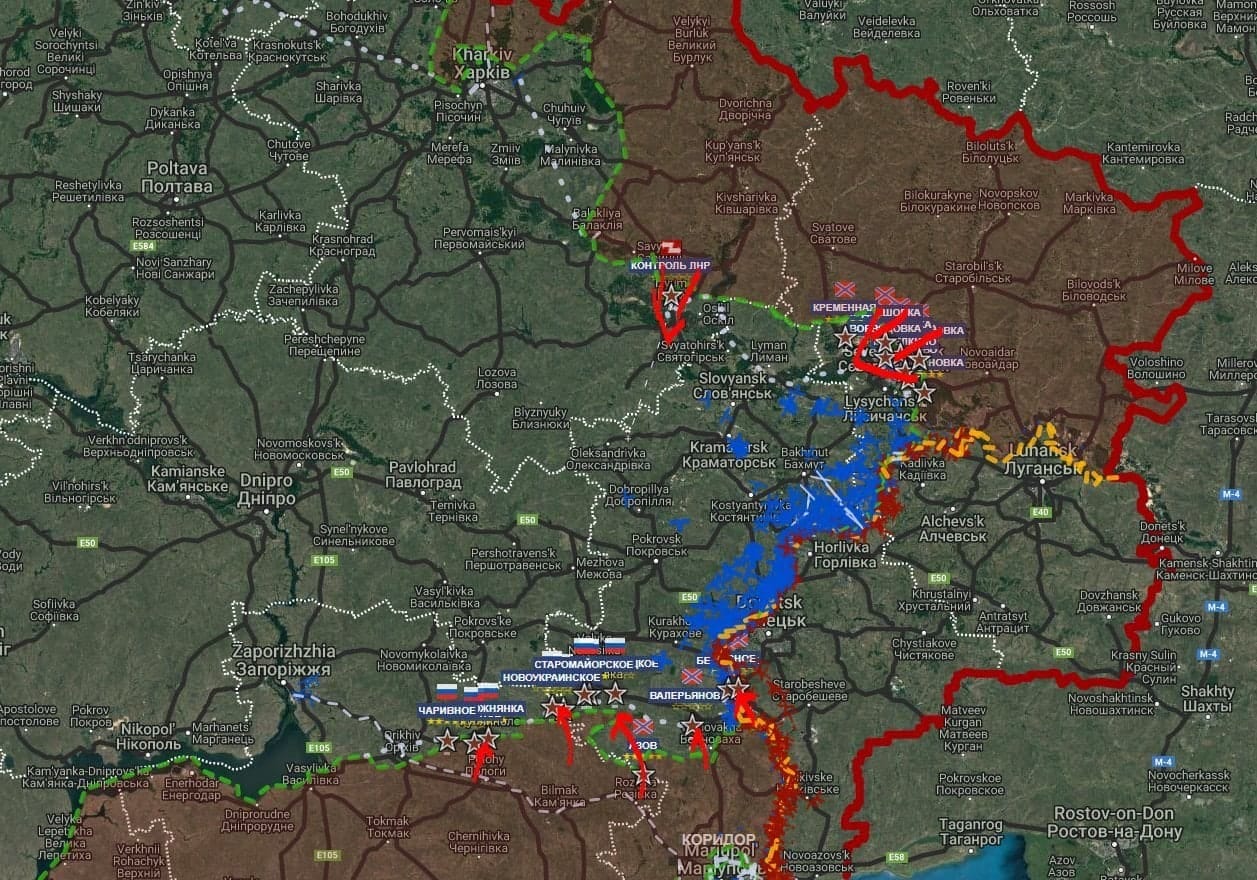



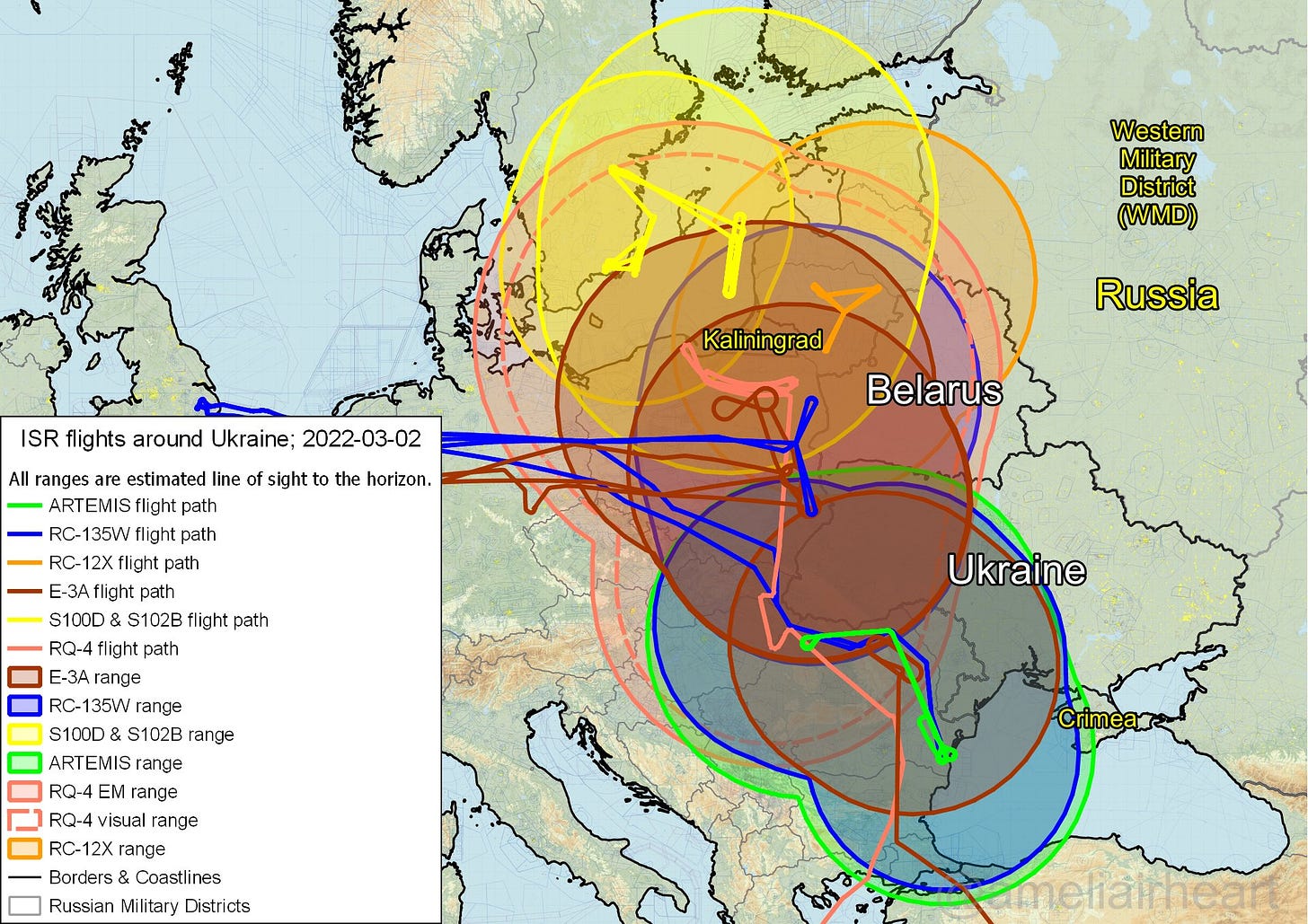
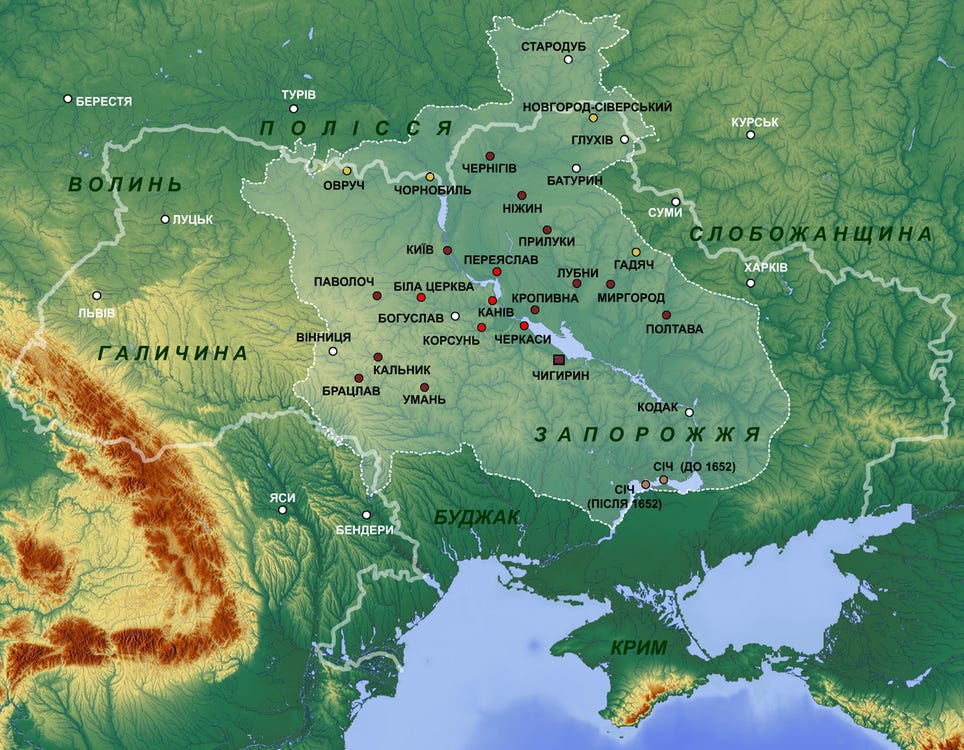
A remarkably comprehensive take of unusual quality, I think. Something even more remarkable given its concision.
In particular, I really like your inclusion of the Belarusian color revolution as a precursor event. The connection is something that I've noted privately. Indeed, the lack of effective and reliable Belarusian support in 2014 may have been among the decisive factors against Russian intervention back then.
Seems like the attempt to color revolutionize two of the three Russias has turned out like many of the other badly motivated and poorly thought out adventures that have been intrepidly advocated by the Western consensus. It does appear that these ops keep colliding with each other.....
Heads up on what might be a typo: 'I might be completely wrong with this assessment, but I do think the immediate objective here is Odessa.' Surely you meant 'I do not think the imm. obj. is Odessa' based on the following text?
I, for one, do think that Odessa is intended to be bypassed. The threat to city will, I suspect, remain convincingly credible, but only to level required to pin the considerable Ukrainian resources committed to the area.
I also think that Kiev is going to be one of the last major pieces to fall into place - much better to seal it up and let the defenders chew on each other than risk blowing it to bits. I made a joke to someone that Russian tanks will be in Lvov before Kiev, but I definitely think that the priority is to destroy the Ukrainian military as quickly as possible and to solidify control of the key road, rail, and river networks in the center and east of the country before pressing the issue of the capital. It's unfortunate that Kharkov is facing a probable sacking but trashing Kharkov does appear to be a rather Lindy event and its example may prove a useful and motivating counterpoint to whatever agreement capable parties the Ukrainians are able to assemble.
I do think that however unlikely it does appear, there is considerable risk 'in the moment' for dramatic escalation. I'm sure that the Russian leadership is well aware of this and is probably positioning itself as best as it can to present a credible deterrent capability. Preserving its air forces and certain categories of weapons I'm sure is a key part in being able to fight a larger war. There does appear to be considerable movement of American military units to the broader region and there are plenty of signs that NATO is attempting to prepare its own best possible force profile. My hope is that all these and related activities are merely due diligence risk mitigation and not a prelude to Global Thermonuclear War.
At any rate, great writeup - it is one that I will be sharing.
I also unironically endorse your final paragraph.
Astute and impressive........I am sensing that something a bit "more" may be in the offing in Ukraine but we will know for sure shortly. I'm surprised by your estimate of the size overall of the available Russian Army....... Only some 300,000 ? Are you sure?